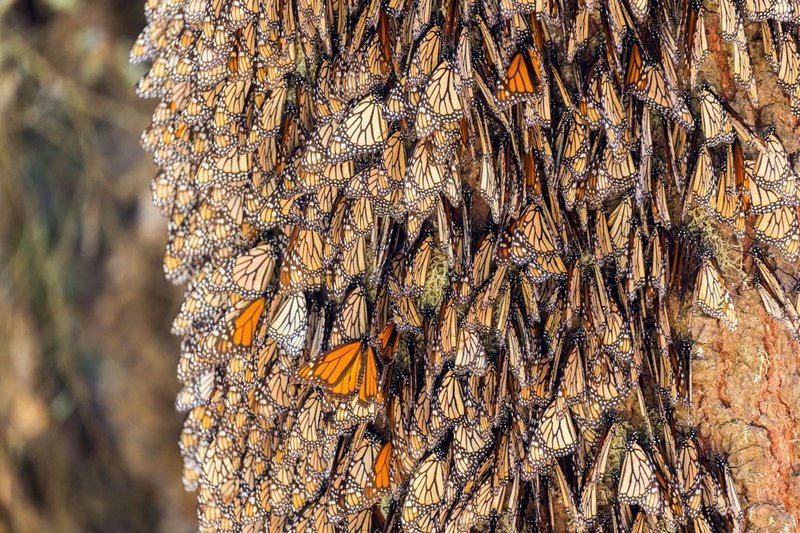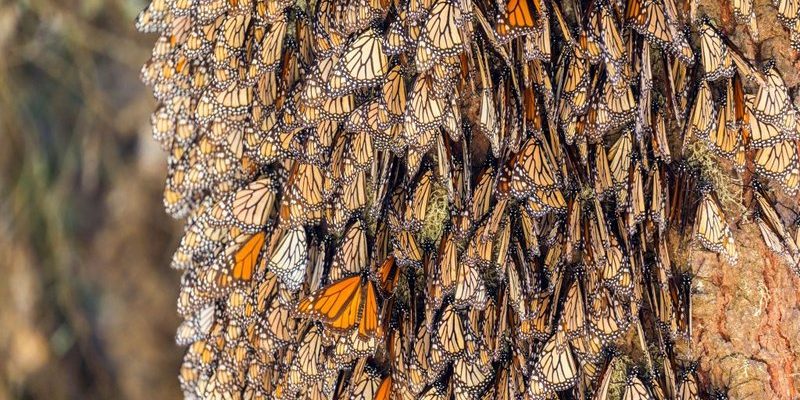
Climate change isn’t just about rising temperatures; it’s like throwing a wrench into a finely tuned machine. Every component, every process, every beautiful migration cycle of the monarch butterfly is affected. Think of it this way: if you were to change the recipe of your favorite dish, you might end up with something completely different—or worse, inedible. That’s what climate change is doing to the delicate balance that monarchs rely on. Let’s explore the effects in more detail.
Understanding Monarch Butterflies and Their Migration
Monarch butterflies are renowned for their spectacular migration journey. Every year, millions of them travel thousands of miles from North America down to Mexico. This long trek is not just an adventure; it’s essential for their survival. During this journey, they rely on specific environmental cues, such as temperature and plant life, to guide their way.
You might be wondering how these little insects manage such a feat. Well, they use a sort of GPS system built into their instincts. Monarchs can sense changes in light and temperature, helping them navigate through different landscapes. But here’s the catch: with climate change impacting weather patterns, these cues are becoming less reliable. When this natural navigation system is thrown off, it can lead to confusion and disorientation during migration.
Furthermore, their reliance on milkweed, the primary food source for monarch caterpillars, makes them particularly vulnerable. If climate change alters habitats or disrupts ecosystems, it can limit the availability of milkweed, directly affecting their lifecycle. So, if you see fewer monarch butterflies in your garden or local park, it could be a red flag indicating a much larger issue.
The Effects of Climate Change on Monarch Habitats
As temperatures rise and weather patterns shift, the habitats that monarch butterflies depend on are changing. Many regions where they used to thrive are becoming inhospitable. For instance, warmer winters might mean that some breeding grounds become unsuitable due to drought or shifting plant life. In essence, the places where they lay their eggs and find food are disappearing.
Additionally, extreme weather events—like storms, droughts, and wildfires—are becoming more common. These events can destroy critical habitats and cut off migration paths, making it even harder for monarchs to survive. Imagine trying to navigate a city where suddenly all the roads you used to take are blocked or washed away. That’s the kind of challenge these butterflies are facing.
Urban development adds another layer of difficulty. As cities expand and natural landscapes are replaced by buildings and roads, monarchs lose valuable habitats. This loss leads to a decline in population, which can have a ripple effect through the ecosystem. When you lose a species as important as the monarch, it can affect pollination and plant growth, disrupting broader ecological balance.
The Importance of Milkweed in Monarch Survival
Milkweed is like a lifeline for monarch butterflies. It’s the only plant on which they lay their eggs and the primary food source for their caterpillars. Without milkweed, the monarch population would drastically decline. Unfortunately, climate change is impacting the growth of milkweed.
As temperatures fluctuate and precipitation patterns change, the growth cycles of milkweed are affected. Sometimes it’s too dry for milkweed to thrive, while other times excessive rain can wash it away. Also, with warmer climates, invasive species can flourish, outcompeting milkweed for resources. When a butterfly’s food source dwindles, it’s not just tough luck; it’s a matter of survival.
Efforts to plant milkweed in local gardens are more crucial than ever. Simple actions like adding milkweed to your flower beds can create safe spaces for monarchs, helping them thrive amidst the challenges posed by climate change. Every plant counts when it comes to supporting this beautiful creature!
How Climate Change Affects Migration Patterns
Migration is a natural instinct for monarchs, but climate change is causing some serious disruptions to this vital behavior. The monarchs rely on specific temperature ranges and daylight hours to trigger their migration. But as temperatures rise, these triggers can become misaligned.
Imagine if you had a clock that didn’t keep proper time. You might wake up late or miss important events because everything is out of sync. Monarchs are experiencing something similar. If they start migrating too early or too late, they may miss critical food sources or breeding opportunities.
Moreover, if the flowers they depend on for nectar bloom earlier due to warmer temperatures, monarchs might arrive at their destination only to find there’s nothing left to eat. The cascading impacts of this misalignment could lead to significant declines in their populations. Simply put, when monarchs can’t time their migration right, it jeopardizes their survival.
Conservation Efforts for Monarch Butterflies
Recognizing the plight of monarch butterflies, many organizations and communities are stepping up to help. Conservation efforts are essential to support these beautiful insects as they navigate through climate change challenges.
One of the most impactful strategies is promoting the planting of milkweed and nectar-rich flowers. Local schools and community groups often organize planting days to create butterfly gardens. These gardens provide safe habitats for monarchs and help restore their populations.
Legislation is also becoming a key player. Some states have enacted laws to protect milkweed and promote sustainable agricultural practices that benefit monarchs. The idea is to create an ecosystem where both farmers and monarchs can thrive. Supporting legislation aimed at habitat preservation is crucial for their survival.
Every small effort counts! You could even become a citizen scientist by documenting your sightings of monarch butterflies and reporting them to conservation organizations. This data helps scientists track population trends and better understand the challenges these butterflies face.
Why Monarch Butterflies Matter to Our Ecosystem
You might be thinking, “Why should I care about monarch butterflies?” It’s a valid question! Monarchs are not just pretty insects; they are critical pollinators. Just like bees, they help fertilize flowers and plants, ensuring that many crops can grow. When you imagine a world without these important butterflies, it becomes clear how much we rely on them for a thriving ecosystem.
Additionally, monarchs serve as indicators of environmental health. If their populations are declining, it often means something is wrong in our ecosystem—be it pollution, habitat loss, or climate change. So, protecting monarchs isn’t just about saving a pretty butterfly; it’s about safeguarding our environment and future.
As we navigate our own lives, it’s essential to remember that our actions have consequences. By making sustainable choices, reducing our carbon footprint, and advocating for policies that protect our environment, we can all play a part in preserving these beautiful creatures.
The impact of climate change on the monarch butterfly is profound and multifaceted. From altered migration patterns to habitat loss, these delicate insects are facing unprecedented challenges. But there’s a silver lining! By advocating for conservation efforts, planting milkweed, and making eco-friendly choices in our daily lives, we can help create a brighter future for monarchs.
Every action counts, no matter how small. The next time you see a monarch fluttering by, remember the journey they’ve taken and the struggles they face. Together, we can ensure that future generations will enjoy the sight of these magnificent butterflies dancing through the air. Let’s work together to protect the monarch butterfly and, in doing so, protect our planet.

